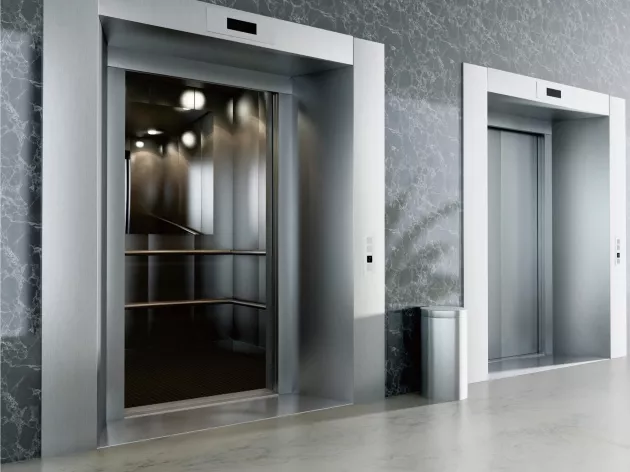The passenger elevator, an invention that revolutionized urban architecture, continues to be a crucial component of modern cities. As skyscrapers rise and urban areas become denser, the demand for efficient, safe, and sustainable vertical transportation has never been higher. This article delves into the innovative strides and challenges passenger elevator manufacturer face in their quest to keep pace with the evolving needs of contemporary urban environments.
The Genesis of Passenger Elevators
The journey of passenger elevators began with a simple yet transformative idea: enabling people to move vertically within buildings with ease. The landmark moment in elevator history occurred in 1853 when Elisha Otis introduced the safety elevator, which featured a braking system to prevent the car from falling if the hoisting cable failed. This innovation paved the way for the development of taller buildings and the eventual emergence of skyscrapers.
Leading Manufacturers and Their Contributions
Several key players have dominated the passenger elevator manufacturing industry, each contributing unique innovations and setting benchmarks in quality and safety. Notable companies include:
- Otis Elevator Company: Known for its pioneering role in elevator safety and efficiency.
- Schindler Group: Renowned for its cutting-edge technology and commitment to sustainability.
- ThyssenKrupp: Innovator in the development of the TWIN elevator system, which allows two elevator cars to operate independently in the same shaft.
- KONE: Focused on eco-efficiency and smart building solutions.
- Mitsubishi Electric: Leader in high-speed elevator technology, catering to some of the world’s tallest buildings.
Technological Innovations Driving the Industry
Passenger elevator manufacturers are at the forefront of technological advancements, continuously enhancing performance, user experience, and sustainability. Key innovations include:
- Ultra-High-Speed Elevators: As buildings reach unprecedented heights, the need for ultra-high-speed elevators has become crucial. These elevators, capable of speeds exceeding 20 meters per second, drastically reduce travel time for passengers in skyscrapers.
- Double-Deck Elevators: These elevators feature two vertically connected cabins, allowing simultaneous boarding and deboarding on two floors, thereby increasing capacity and reducing waiting times.
- Cable-Free Systems: Innovations such as the MULTI system by ThyssenKrupp eliminate the need for traditional cables, using magnetic levitation technology to move elevator cars both vertically and horizontally. This system offers unparalleled flexibility and efficiency in building design.
- Touchless and Smart Control Systems: The integration of touchless controls and smart systems enhances user convenience and hygiene. Voice commands, smartphone apps, and gesture-based controls are becoming standard features, particularly in the wake of the COVID-19 pandemic.
Safety Enhancements and Regulatory Compliance
Safety remains a cornerstone of the passenger elevator industry. Manufacturers adhere to rigorous standards and regulations, ensuring the highest levels of passenger safety. Innovations such as advanced braking systems, seismic sensors, fire-resistant materials, and real-time monitoring systems are integral to modern elevator designs. Regulatory bodies, including the American Society of Mechanical Engineers (ASME) and the European Committee for Standardization (CEN), continually update safety guidelines to reflect the latest technological advancements and safety practices.
Challenges in the Industry
Despite remarkable progress, the passenger elevator manufacturing industry faces several challenges:
- Urban Density and Infrastructure Limitations: As cities grow denser, the demand for vertical transportation increases. Integrating new elevator systems into existing buildings and infrastructure can be complex and costly.
- Sustainability Pressures: The push for greener buildings necessitates the development of more energy-efficient elevator systems. Manufacturers must balance the need for performance with environmental sustainability, often requiring significant R&D investment.
- Regulatory Compliance: Keeping up with ever-evolving safety and environmental regulations can be demanding. Manufacturers must ensure their products meet the latest standards, which can vary significantly across different regions.
- Technological Integration: The rapid pace of technological advancement requires manufacturers to continuously innovate and integrate new technologies. This can be challenging in terms of both cost and implementation.
The Future of Passenger Elevators
Looking ahead, the future of passenger elevators is poised to be shaped by further advancements in technology and a stronger focus on sustainability. Emerging trends include:
- Artificial Intelligence: AI will play a critical role in optimizing elevator operations, predicting maintenance needs, and enhancing passenger flow management.
- Sustainable Materials: The use of eco-friendly materials and energy-efficient components will become increasingly important in elevator manufacturing.
- Customized Solutions: As buildings become more diverse in their design and function, bespoke elevator solutions tailored to specific building needs will become more prevalent.
- Vertical Cities: With the rise of vertical cities, where buildings house multiple functions like residential, commercial, and recreational spaces, the role of elevators will expand, integrating seamlessly with the broader urban ecosystem.
Conclusion
Passenger elevator manufacturers are at the heart of modern urban development, driving innovation and meeting the challenges of an ever-changing landscape. Their commitment to safety, efficiency, and sustainability ensures that as our cities grow taller and more complex, vertical transportation will continue to evolve, making urban living more convenient and accessible. The future promises exciting advancements that will redefine how we move within the vertical confines of our built environment.







